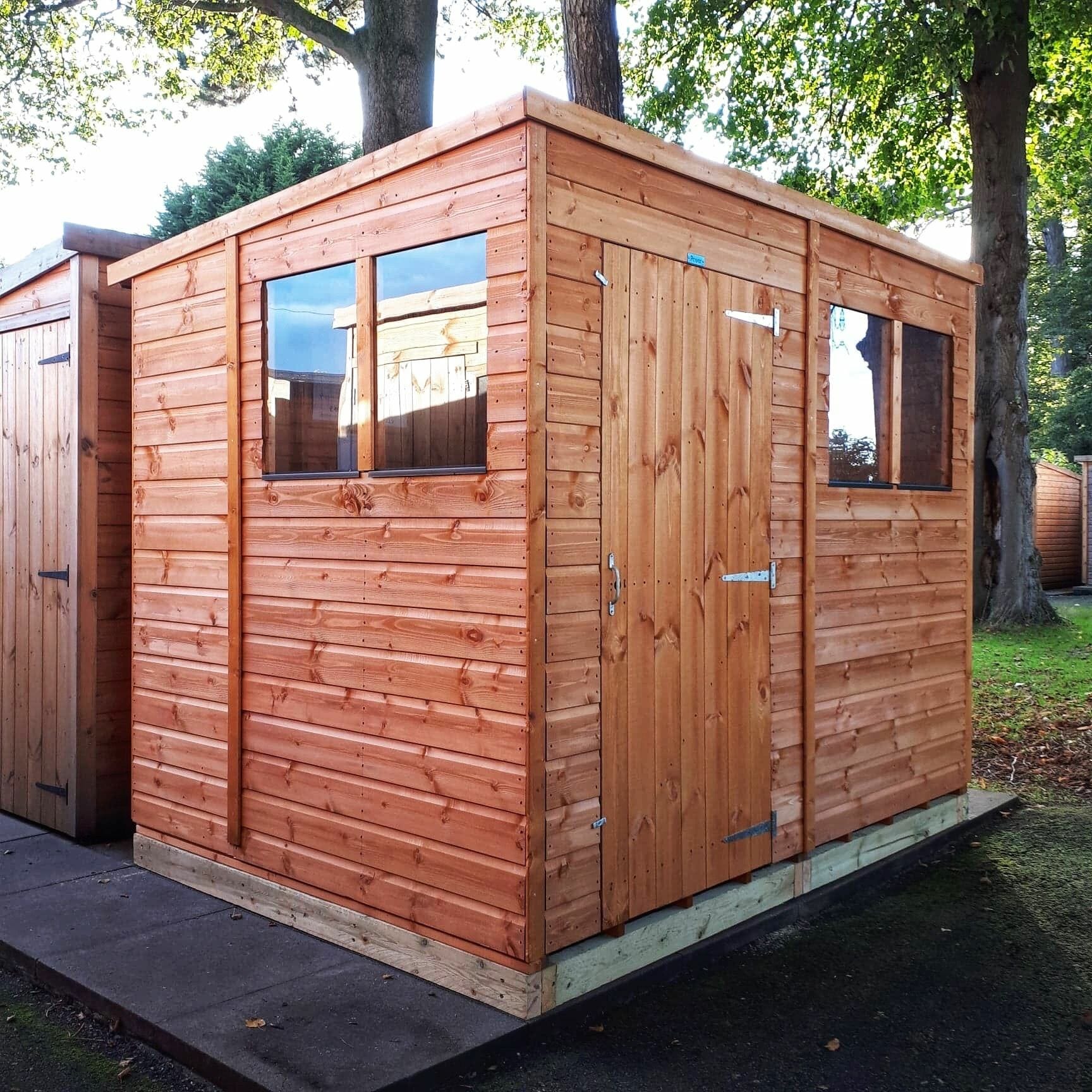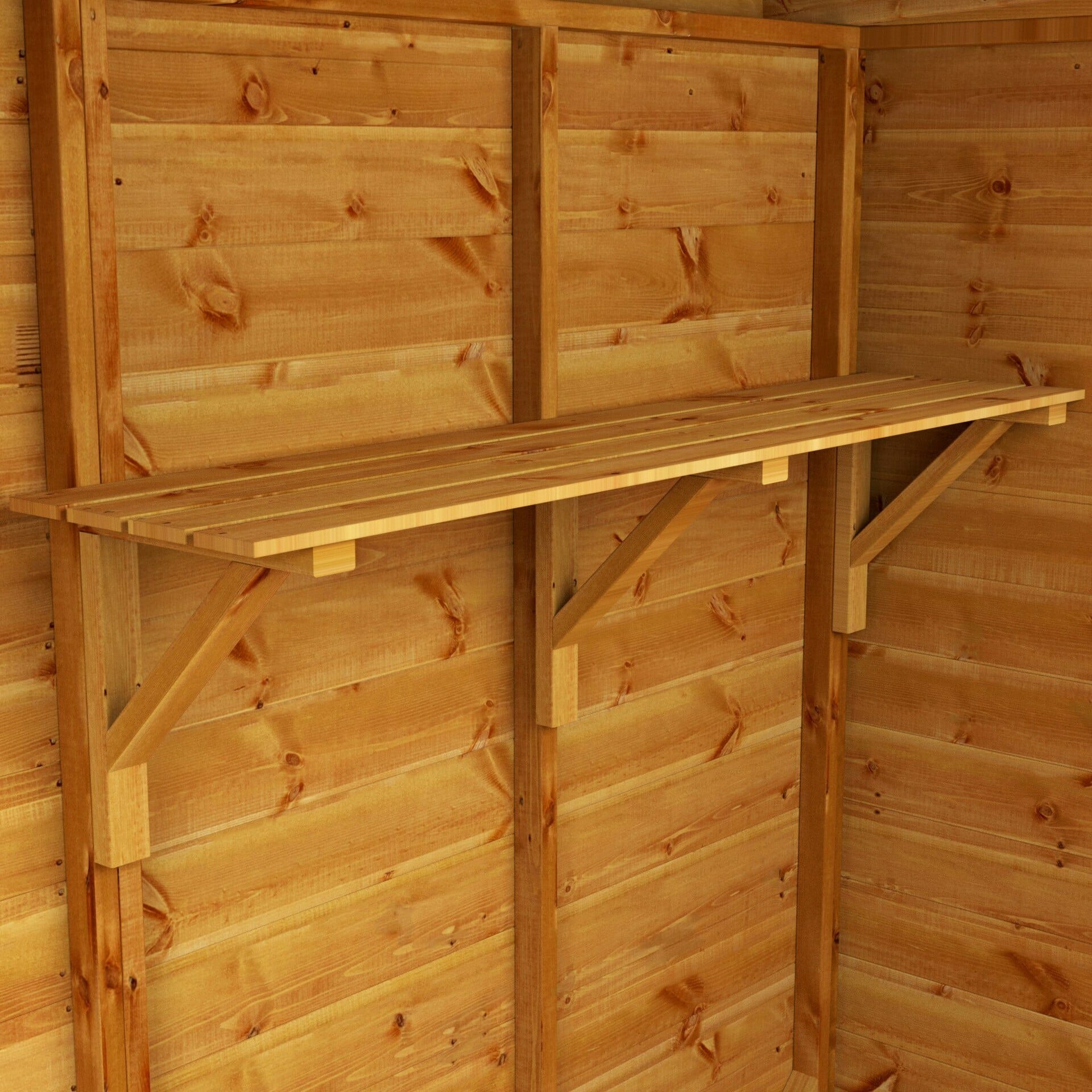
Garden Centre Staff Shed Training Guide
Please feel free to use this handy manual, by Power Sheds, to educate your garden centre sales staff on the basics of garden sheds.
Shed Roof Type
Apex Sheds
An apex styled roof is shaped like an inverted V. It is a roof in two sections which meet at the highest point at the ‘ridge’ of the building. Sheds generally come in the form of an apex shed or a pent shed.

Pent Sheds
A pent roof shed features a single slope. The door on a pent shed would traditionally be on the high side – however, Power Sheds allow you to put the door in any position you want on any side.

Shed Cladding Type
Shiplap Sheds (tongue and groove sheds)
Tongue and groove cladding is where each board has a ‘tongue’ which locks into the ‘groove’ of the board above. Due to the boards connecting, tongue and groove sheds last much longer and are far stronger than an overlap shed where each board overlaps the board beneath.
Shiplap cladding on a shed is a type of tongue and groove cladding. Shiplap cladding has the additional feature of a small profile at the top of each board. This little channel, allows water to run off the shed quicker than normal tongue and groove. This also helps the shed dry quickly after exposure to rain, helping to protect it from any water damage. Shiplap tongue and groove cladding also gives sheds an attractive appearance and has a robust and sturdy structure.

Overlap Sheds
Overlap cladding is where each boards overlaps the board beneath – like how a fence panel works. Overlap sheds are generally thinner rough cut boards (and not smooth planed) and therefore cheaper. Budget / cheap sheds are typically made from overlap cladding
Loglap Sheds
Loglap cladding is a form of tongue and groove where each board has the appearance of a log. Usually a company will offer this quoting the extra thickness of the board although note it is only that thick at it’s central point. Loglap is not necessarily a better quality than shiplap cladding but it gives the shed a different look and feel.
Shed Treatment
Dip treatment
Dip treatment is a method of applying preservative to timber where shed panels are dipped into a tank of preservative fully submerging the panel into the treatment. All surfaces are thoroughly immersed before being removed and dried. It is a fast, efficient and economical way to treat panels.
Pressure treatment
Pressure treating is where the timber is put into a chamber and a mixture of chemicals is treated into the timber to minimise the chances that the wood will rot in the future. Pressure treated timber is usually green although can sometimes be brown.
Shed Base
All sheds, even if they come with a floor, need a firm and level shed base to sit on. This is usually concrete, paving slabs, or a timber framed based. If the customer plans to make a base out of timber, it should be recommended that they lay the timber base down in opposite directions to the floor joists.

Shed Installation
Sheds are generally self-assembly and will come with fixings and instructions. Panels are pre-assembled and the customer needs to nail / screw them together. However, check with your shed supplier to see what the options are with the sheds you supply. They may be able to offer installation with the shed or some garden centres offer installation as an additional service.
Additional extras
There are usually lots of additional extras you can cross sell with a garden shed sale. These typically include additional preservatives, installation, bases, shelving, opening windows etc. Therefore please make sure you are aware of the optional extras available for each garden shed on your show site.

For any questions on any of this information please do not hesitate to contact us.